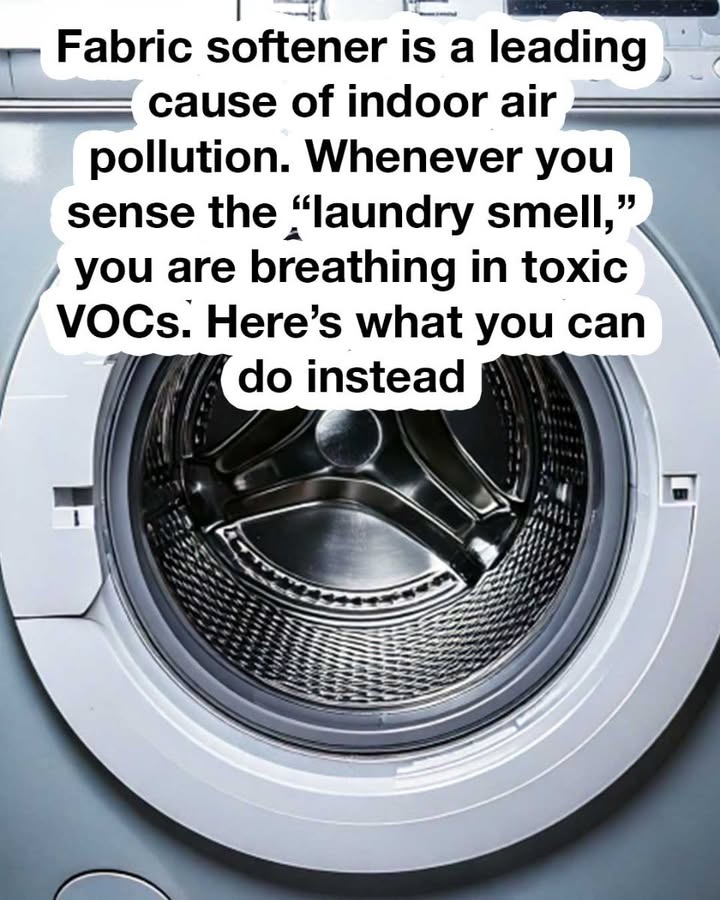Indoor air quality is an increasingly important issue, especially as people spend more time indoors than ever before. While many homeowners focus on keeping their spaces clean and tidy, one commonly overlooked contributor to indoor air pollution is the use of fabric softeners.

These popular laundry products are praised for making clothes feel softer and smell pleasant, but beneath the surface, they often contain a mixture of chemicals that can release volatile organic compounds (VOCs) into the air. Although the fresh scent they provide may feel comforting, it may also be a signal of potential harm. VOCs are carbon-based chemicals that easily evaporate at room temperature and are found in a wide range of household items including paints, cleaning products, air fresheners, and yes, fabric softeners.
These compounds are known to contribute significantly to indoor air pollution and have been linked to both short- and long-term health issues. Formaldehyde, benzene, and toluene are just a few examples of VOCs commonly found in everyday items, and each carries its own risks. For instance, formaldehyde has been associated with respiratory problems and even cancer with long-term exposure. Understanding what VOCs are and how they work is critical to recognizing the hidden dangers that might be present in something as routine as doing laundry. Fabric softeners contribute to this problem primarily because of the chemicals used to produce their signature softness and fragrance.
During both the washing and drying cycles, these substances are agitated and heated, causing VOCs to be released into the surrounding air. In particular, the synthetic fragrances used in many commercial softeners are designed not only to mask odors but to linger on clothes long after the wash is done. These fragrances, while pleasant, are often made up of dozens of chemical components, many of which are not disclosed on product labels. When heated in the dryer, these compounds become airborne, contributing to indoor air pollution in spaces that may already suffer from poor ventilation.
One of the most concerning aspects is that the familiar “clean laundry” smell that many of us associate with freshness is often the result of chemical emissions rather than actual cleanliness. This scent is a complex blend of synthetic fragrance molecules that not only attach to your clothing but also disperse into the air around your home. Studies have shown that these emissions can include chemicals classified as hazardous under federal environmental laws. A study by the University of Washington found that scented laundry products, including fabric softeners, released over 25 VOCs, several of which are considered toxic. For people with asthma, allergies, or other respiratory conditions, this chemical exposure can be especially problematic. Short-term effects of VOC inhalation can include headaches, throat irritation, dizziness, and eye discomfort, while prolonged exposure has been linked to liver and kidney damage, central nervous system effects, and an increased risk of developing certain cancers. This raises an important concern about the products we use daily and how they impact not only our health but the air we breathe. Fortunately, there are effective and safer alternatives for those looking to reduce their exposure to harmful chemicals. One simple switch is to use wool dryer balls, which help soften clothes naturally and can reduce drying time. Another option is to add a half cup of white vinegar to your washing machine’s rinse cycle—this can help soften fabric and neutralize odors without leaving behind harmful residues. Additionally, many eco-conscious brands now offer plant-based fabric softeners made with essential oils and natural ingredients, eliminating the need for synthetic chemicals altogether. Making the switch to healthier options is just one part of a broader strategy to reduce indoor air pollution. Keeping your home well-ventilated is key—open windows when weather allows, run exhaust fans in bathrooms and kitchens, and maintain HVAC systems to ensure proper airflow. Using air purifiers with HEPA filters can also help trap particles and reduce VOC levels in the air. Regular cleaning, dusting, and vacuuming further support a cleaner indoor environment. In the end, the goal is to make smarter choices that support both your health and the environment. Recognizing fabric softeners as a source of indoor air pollution is an important first step. By choosing natural alternatives and improving ventilation, individuals can significantly enhance the quality of the air in their homes. These efforts not only help protect your health and the well-being of your family but also promote a more sustainable lifestyle that benefits the planet as a whole.





